Explore the bold world of red and orange flowers. Discover popular varieties, learn about their symbolism, and get expert tips on incorporating these vibrant blooms into your garden and floral designs.
Red and orange flowers bring a burst of warmth and energy to any garden or floral arrangement. These vibrant hues evoke feelings of passion, enthusiasm, and joy, making them popular choices for both bold landscaping designs and eye-catching bouquets. This comprehensive guide will explore a variety of red and orange flowers, their meanings, care requirements, and creative ways to use them in your outdoor spaces and floral designs.
As a horticulturist and floral designer with over 20 years of experience, I’ve worked extensively with red and orange flowers in both garden planning and event decor. My designs featuring these fiery blooms have been showcased in national gardening magazines and at major botanical exhibitions. Let me share my expertise to help you make the most of these stunning flowers.
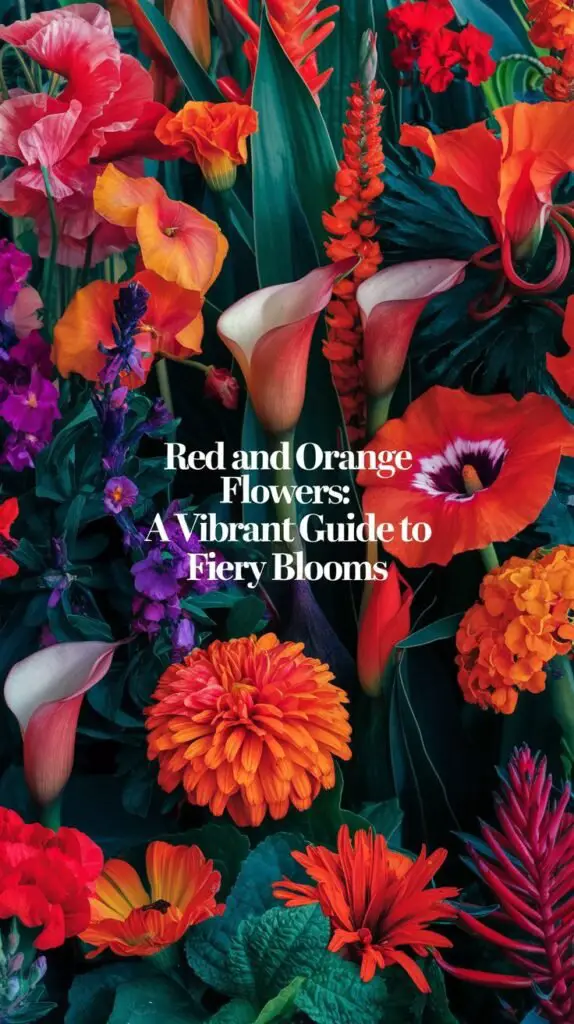
Popular Red and Orange Flower Varieties
Red Flowers
- Roses: Classic symbols of love and passion
- Tulips: Represent perfect love
- Carnations: Symbolize admiration and affection
- Dahlias: Represent dignity and stability
- Gerbera Daisies: Signify cheerfulness and innocence
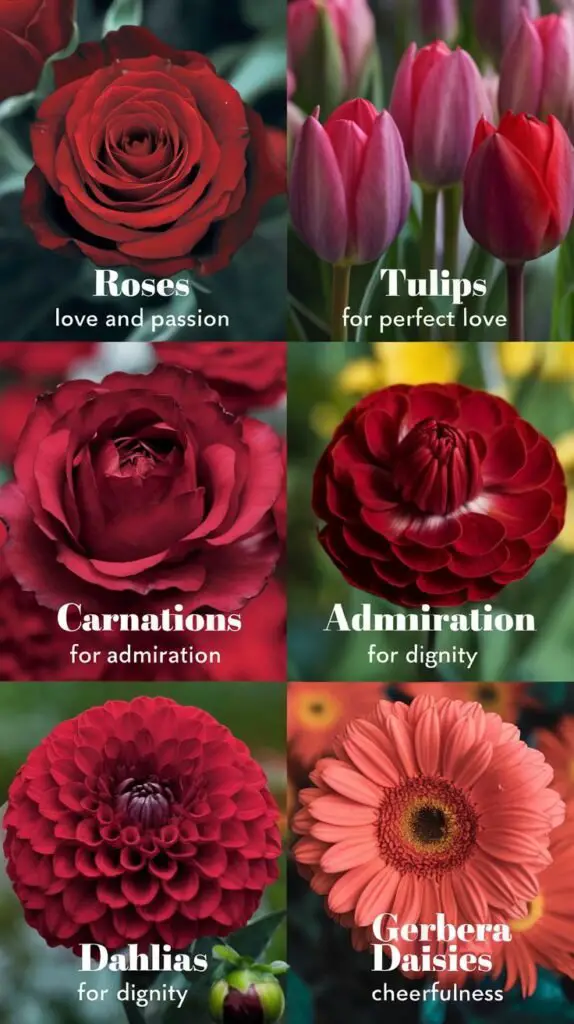
Orange Flowers
- Marigolds: Symbolize creativity and passion
- Lilies: Represent confidence and pride
- Zinnias: Signify lasting affection and daily remembrance
- Chrysanthemums: Symbolize optimism and joy
- Nasturtiums: Represent patriotism and conquest
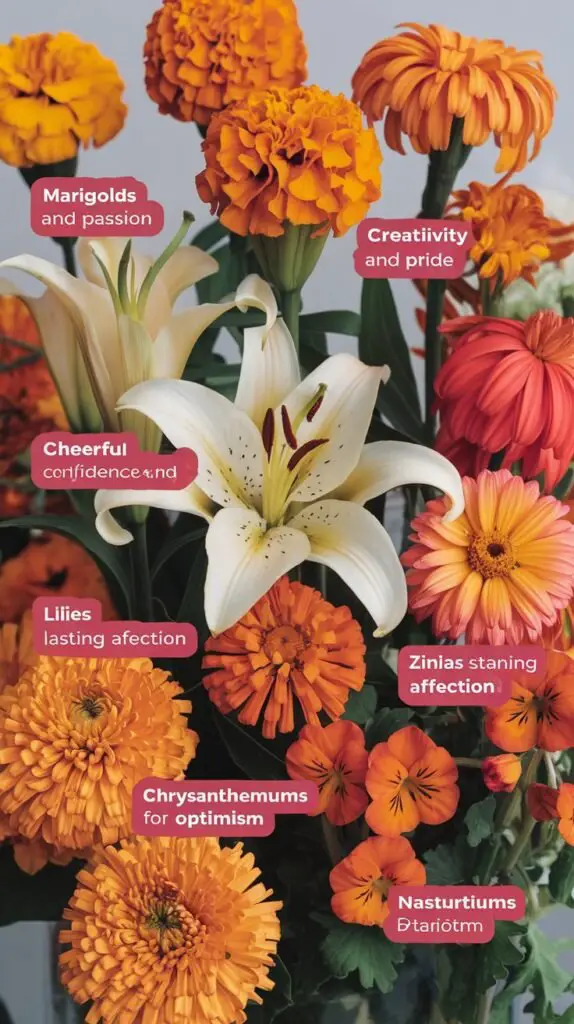
Flowers with Both Red and Orange Varieties
- Poppies: Symbolize remembrance and consolation
- Begonias: Represent caution or deep thinking
- Calla Lilies: Signify magnificence and beauty
- Ranunculus: Represent charm and attractiveness
- Lantana: Symbolize rigor and persistence
For more information on flower meanings, visit the Society of American Florists’ Flower Meaning Guide.
Symbolism and Color Psychology
- Red: Associated with love, passion, strength, and courage
- Orange: Represents enthusiasm, creativity, success, and encouragement
Combined, red and orange create a powerful visual impact that can:
- Energize a space
- Stimulate conversation and appetite
- Create a warm, welcoming atmosphere
- Add a tropical or autumnal feel depending on the flower choices
Growing Red and Orange Flowers
General Care Tips
- Sunlight: Most red and orange flowers thrive in full sun (6-8 hours daily)
- Soil: Well-draining, fertile soil rich in organic matter
- Watering: Consistent moisture, avoiding waterlogged conditions
- Fertilizer: Regular feeding with a balanced, water-soluble fertilizer
- Deadheading: Remove spent blooms to encourage continued flowering
Seasonal Considerations
- Spring: Plant tulips, poppies, and ranunculus
- Summer: Focus on zinnias, marigolds, and dahlias
- Fall: Chrysanthemums and certain varieties of roses bloom beautifully
- Winter: Consider indoor options like amaryllis or forced tulips
For specific growing instructions, consult the Royal Horticultural Society’s Plant Finder.
Designing with Red and Orange Flowers
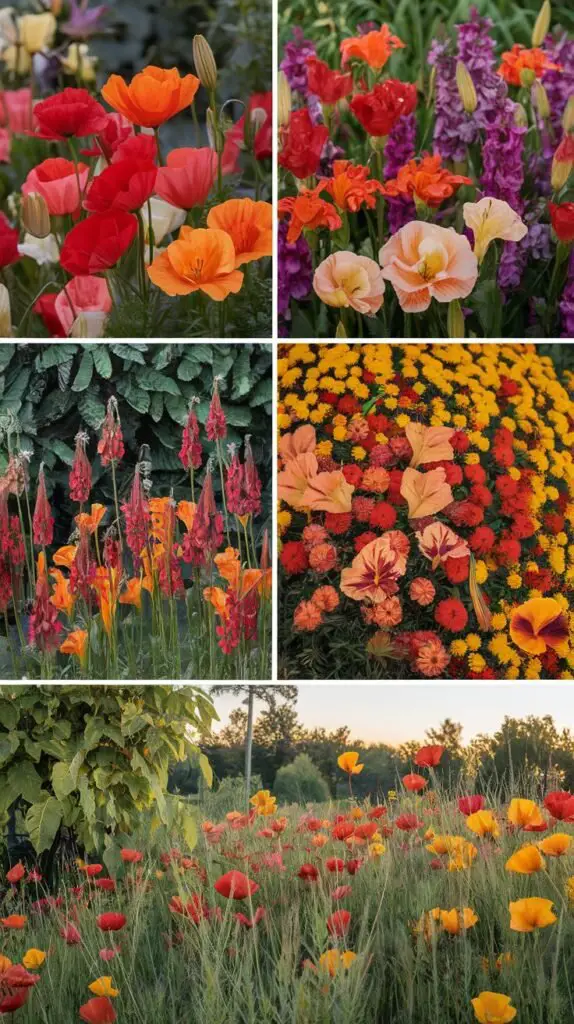
In the Garden
- Monochromatic Beds: Create impact with various shades of red or orange
- Complementary Color Schemes: Pair with purple or blue flowers for striking contrast
- Autumn Gardens: Combine red and orange flowers with yellow for a fall palette
- Tropical Look: Use red and orange flowers with lush, green foliage for an exotic feel
- Wildflower Meadows: Incorporate red poppies and orange California poppies
In Floral Arrangements
- Sunset-Inspired Bouquets: Gradient arrangements from deep red to pale orange
- Thanksgiving Centerpieces: Combine with autumn leaves and gourds
- Tropical Arrangements: Mix with bird of paradise and palm leaves
- Valentine’s Day: Red roses with orange accents for a modern twist
- Wedding Flowers: Vibrant bridesmaid bouquets or bold reception centerpieces
For floral design inspiration, follow renowned florists on Instagram like @tulipina or @myflowerjournal.
Creative Uses Beyond Traditional Gardening and Floristry
- Edible Flowers: Use nasturtiums or marigolds in salads or as garnishes
- Natural Dyes: Create fabric dyes from marigolds or roses
- Dried Flower Art: Press and frame red and orange blooms for lasting artwork
- Potpourri: Dry rose petals and marigolds for fragrant home decor
- Floral Ice Cubes: Freeze small blooms in ice for colorful summer drinks
Maintaining Cut Red and Orange Flowers
- Trim Stems: Cut 1-2 inches off stems at a 45-degree angle before placing in water
- Use Clean Vases: Ensure vases are thoroughly cleaned to prevent bacterial growth
- Flower Food: Use floral preservative to extend vase life
- Water Temperature: Use room temperature water for most flowers
- Remove Leaves: Strip off any leaves that will be below the waterline
Learn more about cut flower care from the Association of Specialty Cut Flower Growers.
FAQ: Red and Orange Flowers
- Q: Which red and orange flowers are best for attracting pollinators? A: Zinnias, marigolds, and lantana are excellent choices for attracting bees and butterflies.
- Q: Are there any true orange roses? A: While not naturally occurring, orange roses have been cultivated through breeding. Popular varieties include ‘Orange Sensation’ and ‘Super Trouper’.
- Q: What are some low-maintenance red or orange flowers for beginners? A: Marigolds, zinnias, and nasturtiums are relatively easy to grow and care for.
- Q: Can I change the color of hydrangeas to red or orange? A: Hydrangeas can’t typically be changed to true red or orange, but you can achieve deep pink or salmon hues by adjusting soil pH.
- Q: What are some good red and orange flowers for cut flower gardens? A: Dahlias, zinnias, gerbera daisies, and calla lilies make excellent cut flowers in these colors.
Red and orange flowers offer a bold and beautiful way to add warmth and energy to your garden or floral designs. Whether you’re creating a fiery border in your landscape, designing a vibrant bouquet, or simply looking to add a pop of color to your space, these bright blooms are sure to make a statement. Experiment with different combinations and varieties to find the perfect red and orange flower mix for your needs.
For more information on gardening with vibrant colors, consider joining the American Horticultural Society or attending workshops at your local botanical garden.
For more gardening tips and plant care guides, visit usagardenhub.com

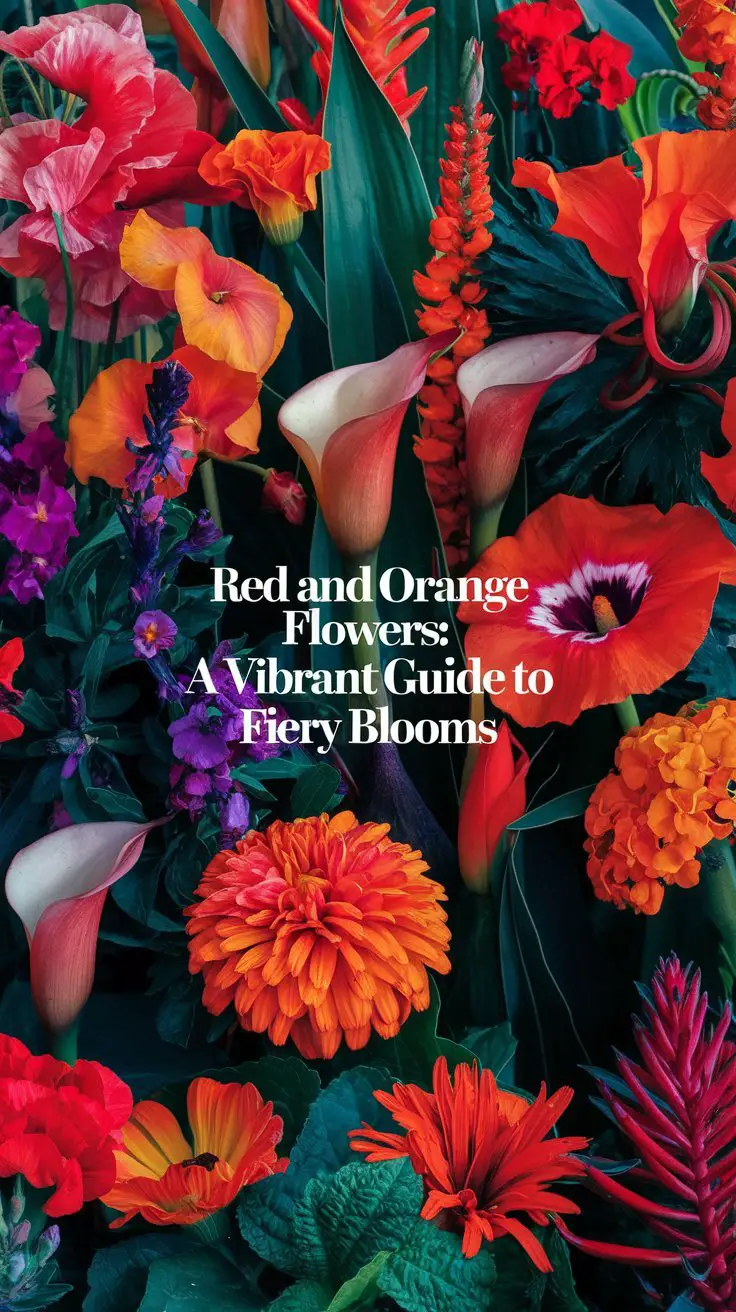



2 Comments on “Red and Orange Flowers: A Vibrant Guide to Fiery Blooms”